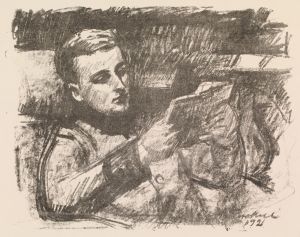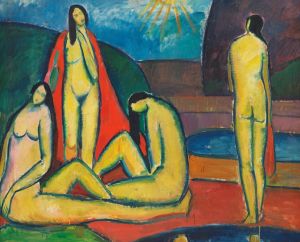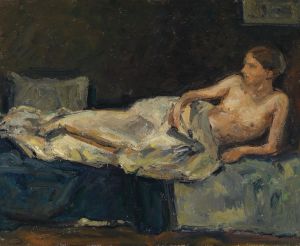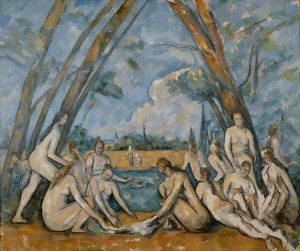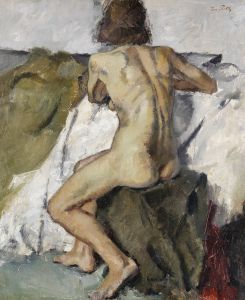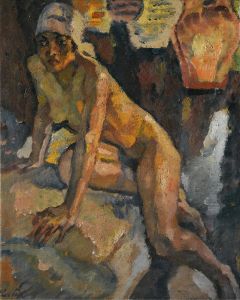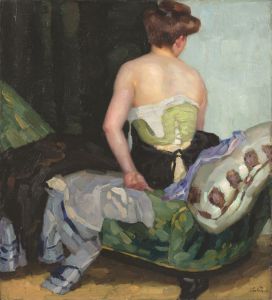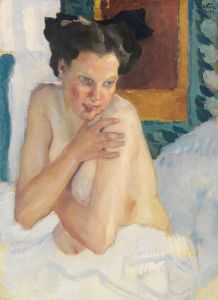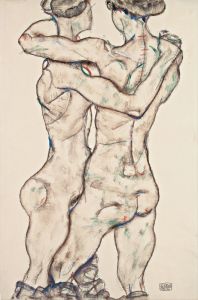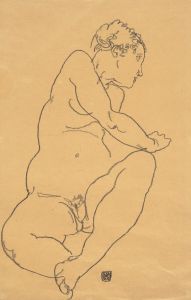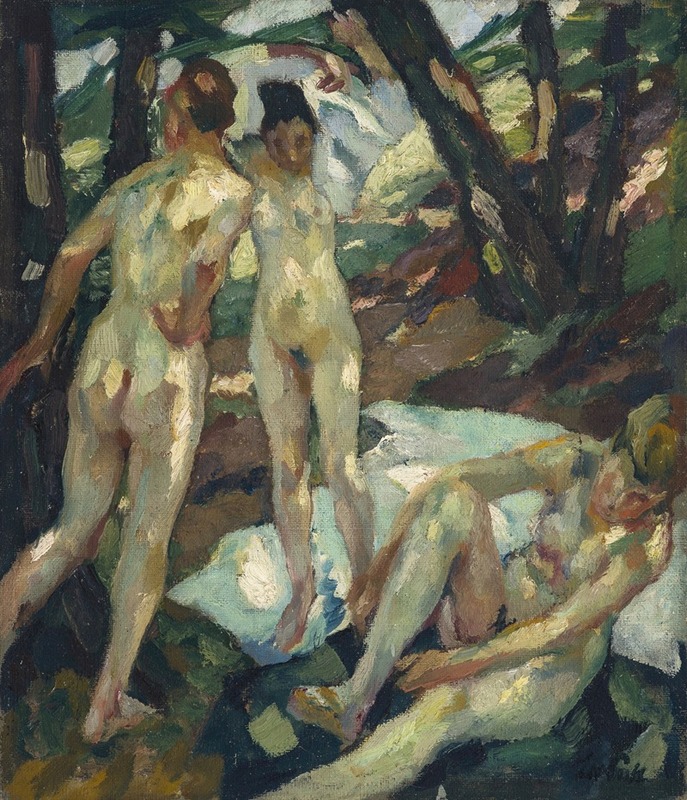
Die Badenden
A hand-painted replica of Leo Putz’s masterpiece Die Badenden, meticulously crafted by professional artists to capture the true essence of the original. Each piece is created with museum-quality canvas and rare mineral pigments, carefully painted by experienced artists with delicate brushstrokes and rich, layered colors to perfectly recreate the texture of the original artwork. Unlike machine-printed reproductions, this hand-painted version brings the painting to life, infused with the artist’s emotions and skill in every stroke. Whether for personal collection or home decoration, it instantly elevates the artistic atmosphere of any space.
Leo Putz was a prominent German painter known for his contributions to the art movements of Impressionism and Jugendstil, the German variant of Art Nouveau. One of his notable works is "Die Badenden" (The Bathers), which exemplifies his skill in capturing the human form and his adept use of color and light.
"Die Badenden" was created during a period when Putz was deeply influenced by the Impressionist movement, which is evident in his loose brushwork and the vibrant play of light in the painting. The artwork depicts a group of women bathing in a natural setting, a common theme in Putz's work that reflects his interest in the human figure and the natural world. The scene is characterized by its serene atmosphere and the harmonious integration of the figures with their surroundings.
Putz's use of color in "Die Badenden" is particularly noteworthy. He employs a palette that captures the warmth of sunlight and the coolness of water, creating a dynamic contrast that enhances the overall composition. The figures are rendered with a softness that suggests movement and fluidity, a technique that Putz mastered to convey the ephemeral qualities of light and shadow.
The painting is also a reflection of the cultural and artistic milieu of early 20th-century Germany. During this time, there was a growing interest in exploring themes of nature, leisure, and the human body, partly as a reaction to the rapid industrialization and urbanization of society. Putz, along with his contemporaries, sought to capture the beauty and tranquility of the natural world, offering viewers an escape from the complexities of modern life.
Leo Putz was a member of the Munich Secession, an influential group of artists who broke away from traditional academic art institutions to pursue more avant-garde and progressive styles. This affiliation provided Putz with a platform to exhibit his work and connect with other like-minded artists. "Die Badenden" reflects the ideals of the Secession, emphasizing artistic freedom and innovation.
Throughout his career, Putz traveled extensively, and his experiences abroad further enriched his artistic style. He spent time in Italy, where the Mediterranean light and landscape had a profound impact on his work, as well as in South America, where he continued to explore themes of nature and the human form.
"Die Badenden" remains an important work in Putz's oeuvre, showcasing his ability to blend elements of Impressionism with his unique artistic vision. The painting not only highlights his technical prowess but also his sensitivity to the interplay between humans and their environment.
Today, Leo Putz's works, including "Die Badenden," are held in various collections and continue to be appreciated for their contribution to early 20th-century art. His paintings offer insight into the cultural and artistic transitions of the time, reflecting a period of change and exploration in the art world.





